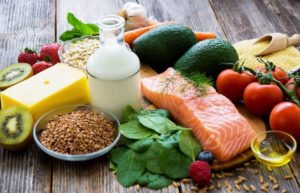
What foods can make arthritis worse These are the top questions we get. Some are inflammatory, and some are not. But what does all this mean? You need to be aware of what you eat. A healthy diet is crucial to keeping inflammation down. Incorporating garlic into your diet can be especially beneficial. Garlic has anti-inflammatory properties that can help with joint pain. Omega-3 fatty acids are also helpful for people with arthritis, as they reduce inflammation and can help you stay healthy.
Some foods and drinks may help you to fight arthritis. Research has shown that antioxidant polyphenols in orange juice, green tea and other beverages can protect the body from injury. You should also watch your portions and calories. Hydration can be achieved by drinking water. Some foods can actually make arthritis worse. So what can you avoid? These are some options. These ideas can make you feel happier.
Avoid sugar-sweetened sodas. These products can increase inflammation and worsen arthritis. You should also avoid eating too much sugar. Studies have shown that sugar intake makes symptoms worse. Inflammation often plays a role in arthritis symptoms. You should limit the intake of these foods to improve your condition. It is also wise not to eat red meat because it has high levels sugar and fat.

You should limit your intake simple carbohydrates. Simple sugars can increase your blood sugar and cause inflammation. Hence, a healthy diet should be full of vegetables like tomatoes and eggplants. Beans and nuts are essential for anti-arthritis. Roasted vegetables are also an option. They can lower your risk of developing arthritis in the knees. Don't eat refined sugar. It's an inflammation toxin that can increase your likelihood of developing arthritis.
Refined grains can cause inflammation and increase blood glucose. Refined grains increase the amount of AGEs in the body, which can cause inflammation. These can lead to inflammation and pain. Avoid wheat products and dairy. These foods can make your arthritis symptoms worse. They can increase the amount of omega-6 essential fatty acids in your body, which is very dangerous for your joint health. Refined grains also raise blood glucose levels and cause arthritis.
Sugar and processed carbohydrates should be reduced if you suffer from RA. These foods can cause inflammation and worsen arthritis symptoms. While adding more anti-inflammatory food to your diet can be beneficial, it is important that you remember there are exceptions. For example, eggs and milk are considered healthy for most people. But they can make an impact on your body. If you're suffering from RA, try eating a healthy diet that includes eggs and nuts.
Red meat may make arthritis symptoms worse, according to many studies. Besides causing inflammation in your joints, it also increases your bad cholesterol levels, making the condition worse. In addition, red meat has high levels of Advanced Glycation End Products (AGEs). These are molecules that form when food has been grilled or not cooked. AGEs can cause inflammation and make arthritis symptoms worse. Reduce your intake of these foods.

Refined grains are a big no-no. While they are often tasty, they can increase inflammation and aggravate arthritis symptoms. Therefore, avoid a diet rich in refined grains, processed foods, and dairy. Whole grains can be a good source of fibre and lower your blood levels of C-reactive proteins. They can also help reduce inflammation and pain. You can get the most benefit from them by removing them entirely.
Some foods are better than others. While some of them have less saturated fat and are higher in fiber, they are still good options. It is best to eat more whole grain. They're more nutritious and have fewer trans fats than red meat. And if you do eat red meat, you'll be avoiding saturated fats and omega-6 fatty acids, which are both bad for the joints.
FAQ
Why does our weight change with age
How do you know if your bodyweight changes?
If there are less calories than muscle mass, then weight loss is possible. This means that the amount of calories consumed must exceed the amount of energy used daily. Activity levels are the most common reason for weight loss. Other factors include stress, illness and pregnancy. When there is more fat than muscles, it's called weight gain. It occurs when people eat more calories than what they use in a given day. Common reasons include overeating, increased physical activity, and hormonal changes.
The main reason why our bodies lose weight is because we consume fewer calories than we burn. When we exercise regularly, we increase our metabolism rate which burns off more calories throughout the day. But this doesn't guarantee that we'll lose weight. All that matters is whether we're losing weight or gaining muscles. If we are burning more calories than what we eat, then we will lose weight. But if we're consuming more calories than we're burning, then we're actually storing them as fat.
As we get older, our movement speed slows down and so we move less. We also tend not to eat as much food as we used to when we were younger. As a result, we gain weight. On the flip side, we tend to have more muscle mass so we look bigger than we really are.
It's not possible to measure how much weight your body has lost without weighing yourself every week. There are many different ways to measure your weight. You can gauge your waist size, hips, hips, thighs and arms. Some prefer to use the bathroom scales, others prefer to use tape measures.
Track your progress by measuring your waistline and weighing yourself every week. To track your progress, you can also take photos every few months of yourself to see how far it has come.
You can also check your height online to find out how many pounds you have. For example, if you're 5'10" tall and weigh 180 pounds, you'd probably weigh 180 pounds.
How can I tell what is good for me?
You have to listen to what your body says. When it comes to your body's needs for exercise, food, or rest, it is the best. Your body will tell you what to do so that you don't go overboard. You must listen to your body to ensure you are healthy.
What is the difference of fat and sugar?
Fat is an important energy source, which comes from food. Sugar is a sweet substance that can be found naturally in fruits or vegetables. Both fats and sugars provide the same number of calories. However, fats contain more than twice as many calories as sugars.
Fats are stored within the body and can contribute to obesity. They can lead to cholesterol buildup in the arteries, which could cause heart attacks or strokes.
Sugars are quickly absorbed and provide instant energy. This causes blood glucose levels in the body to rise. High blood glucose levels are dangerous as it can increase the likelihood of developing type 2 diabetes.
Statistics
- This article received 11 testimonials and 86% of readers who voted found it helpful, earning it our reader-approved status. (wikihow.com)
- WHO recommends consuming less than 5% of total energy intake for additional health benefits. (who.int)
- Extra virgin olive oil may benefit heart health, as people who consume it have a lower risk for dying from heart attacks and strokes according to some evidence (57Trusted Source (healthline.com)
- According to the Physical Activity Guidelines for Americans, we should strive for at least 150 minutes of moderate intensity activity each week (54Trusted Source Smoking, harmful use of drugs, and alcohol abuse can all seriously negatively affect your health. (healthline.com)
External Links
How To
What does the meaning of "vitamin?"
Vitamins are organic compounds that can be found in foods. Vitamins are necessary for us to absorb nutrients in the foods we consume. Vitamins cannot come from the body so food must provide them.
There are two types: water-soluble and fat-soluble vitamins. Water soluble vitamins dissolve easily in water. These include vitamin C (thiamine), Vitamin B1 (riboflavin), Vitamin B2 (riboflavin), Vitamin B3 (niacin), Vitamin B6 (pyridoxine), Vitamin C, B1 (thiamine), Vitamin B2 (riboflavin), Vitamin B3 (niacin), and Vitamin B6 (pyridoxine). Fat-soluble vitamins can be stored in the liver or in fatty tissue. You can find vitamin D, E K, A, beta carotene, and other fat-soluble vitamins.
Vitamins are classified based on their biological activity. There are eight major categories of vitamins.
-
A - vital for healthy growth.
-
C is important for nerve function and energy production.
-
D - necessary for healthy bones and teeth.
-
E is required for good vision and reproduction.
-
K - Essential for healthy muscles and nerves.
-
P - essential for strong bones, teeth and tendons
-
Q – aids digestion of iron and iron absorption
-
R - necessary for making red blood cells.
The recommended daily allowance of vitamins (RDA), varies according to age, gender, physical condition, and other factors. The U.S. Food and Drug Administration sets RDA values.
For adults over 19, the RDA for vitaminA is 400 micrograms per daily. For fetal development, pregnant women need 600 mg per day. Children ages 1-8 require 900 micrograms per day. For infants younger than one year, 700 micrograms are required daily. However, this number drops to 500 micrograms each day for children aged 9-12 months.
Children ages 1-18years who are obese need 800 micrograms per day while those who are overweight need 1000 micrograms per day and children who are underweight need 1200 micrograms per day to meet their nutritional needs.
Children between 4 and 8 years old with anemia will need 2200 micrograms daily of vitamin C.
Adults over 50 years of age need 2000 micrograms per day for general health. Because of their higher nutrient needs, women who are pregnant or nursing need 3000 mg per day.
1500 micrograms is the recommended daily intake for adults aged 70+, who lose approximately 10% of muscle each year.
Women who are pregnant and lactating need more nutrients than the RDA. Pregnant woman need 4000 micrograms daily in pregnancy, and 2500 per day after childbirth. Breastfeeding moms need 5000 micrograms each day when breastmilk production occurs.